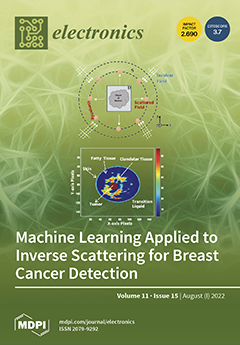Electronics, Volume 11, Issue 15 (August-1 2022) – 197 articles
Numerical validations on realistic breast phantoms are illustrated, demonstrating an average error of 2.4% and an accuracy greater than 96% for all performed tests, even if considering a single operating frequency and a reduced amount of training data. View this paper
- Issues are regarded as officially published after their release is announced to the table of contents alert mailing list.
- You may sign up for e-mail alerts to receive table of contents of newly released issues.
- PDF is the official format for papers published in both, html and pdf forms. To view the papers in pdf format, click on the "PDF Full-text" link, and use the free Adobe Reader to open them.





